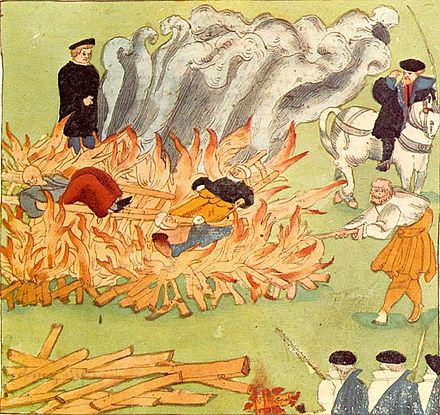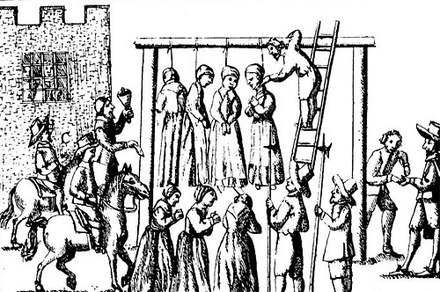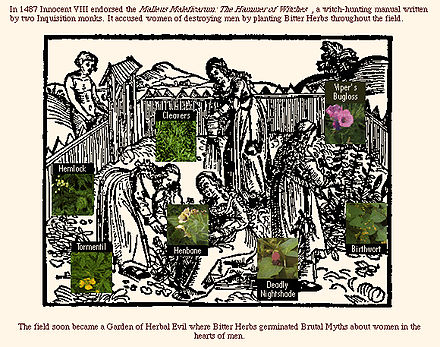The world starts to shift as the inventive minds bring new light into it. Methods of type improve the way of living and enlighten the population. We learned just how much type evolves through this time period, moving from simple text to being able to print detailed illustrations and developing different fonts was a fascinating growth to learn about.
The Witch Hunt

In the lives of early modern Europeans and colonial North Americans were wild as they were without the threat of “witches”. Most accusations took place in Germany, France, Switzerland, and the Netherlands. These “witches” were considered to be using magic to influence people for their own benefit. What people considered “witchcraft” though, was not something scientifically proven nor support by factual evidence that it makes a person a witch. The qualifications of a “witch” would usually be a single woman past her prime age for marriage, one who reads a lot, the ones who seem knowledgable (for women), ones who own cats, especially black ones, people who practiced medicine, and often cases scientists.
The people of this time could not possibly prove dark powers of magic that they would use to influence others. But from the religious bigotry and medieval ignorance, it has been found that over 40,000 people were executed all over the world for their accusations of being a witch.
Instead of scientific accuracy, people ran practical tests based on their beliefs to test an individual accused of being a witch. One of the most infamous tests is the “swimming” test. Since the Catholic Church believed the witches were not baptized, they also believed that any body of water would reject their presence. So these “witches” were tested through being tossed into the nearest body of water, stripped of their clothes. The theory was that if the accused were a “witch” then the water would reject them and they would float, while a regular human being would start to sink. This process did not last a long time due to its uncertainty and not to mention the “accidental” drownings that often occurred.

With many tests to prove their innocence, the people at the time were not satisfied with any defiance of God. Many of the accused “witches” were even Christian, yet the Church overlooked some facts to take control of the public. Eventually, by the 1730s, the witch-trials and executions ended for the time being on the fact that by this point, most people thought of witch-hunting to be fraudulent. There are occurrences of the rise of witch-hunting throughout modern times, but none were as severe as the witch-hunts during this time. As unfortunate as these circumstances were for the poor innocent, the phenomenon did spark modern cultural interpretations of witches in literary culture and has effected a lot of pop culture. To look into the positive, without these witches being executed, we wouldn’t have grown up with “The Wizard of Oz”.

Andrews, Evan. “7 Bizarre Witch Trial Tests.” History.com, A&E Television Networks, 18 Mar. 2014, https://www.history.com/news/7-bizarre-witch-trial-tests.
Lewis, Jone Johnson. “A Timeline of Witch Hunts in Europe.” ThoughtCo, ThoughtCo, 13 Mar. 2019, https://www.thoughtco.com/european-witch-hunts-timeline-3530786.
User, Super. “Who Burned the Witches?” Catholic Education Resource Center, https://www.catholiceducation.org/en/controversy/common-misconceptions/who-burned-the-witches.html.
